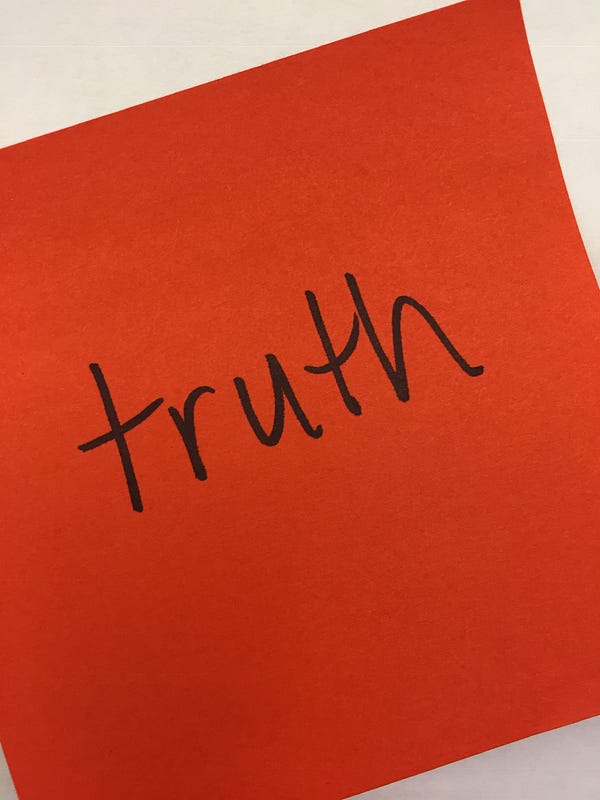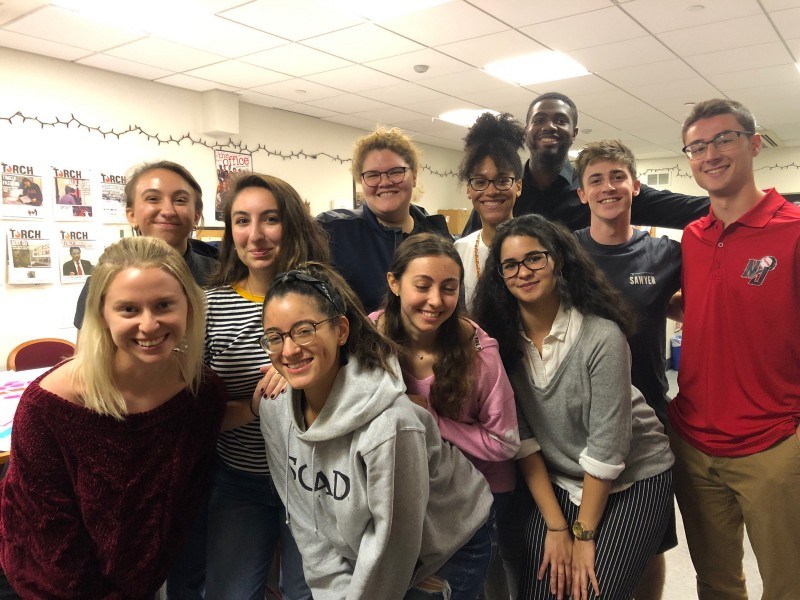St. John’s University is an hour’s drive and on the surface a world away from the global media center of Manhattan, with its towering skyscrapers and neon tickers flashing news headlines 24 hours a day in Times Square. The construction around LaGuardia Airport slides by slowly as we inch our way through late morning traffic. The strange sculptures of the World’s Fair flash by as traffic picks up on the Grand Central Expressway.
We skirt the 102-acre Queens campus as we search for Gate 1, the only entrance that allows visitors to this private Catholic university. We check in at a security gate and are dropped off in a bucolic green open space with beautiful stone buildings settled gracefully along its perimeter. It’s a setting that takes me back to my college days when walking through the gates of the University of Utah dropped me into that energetic, but somehow peaceful, feeling where I could focus on my books, my writing and my college newspaper.
But appearances can be deceiving. Like many colleges and universities in this country, St. John’s and its students — especially those who volunteer on the independent student newspaper, the Torch — are dealing with the same political and social issues that find voice on the national news, in social media and at heated discussions around dinner tables across the nation.
The week Poynter College Media Project co-teacher Elissa Yancey and I arrive on campus, the Torch was covering the news that a group of SJU students had protested the inclusion of Immigration and Customs Enforcement, better known to all of us as ICE, in a fall career fair the week earlier. For the students on this campus it was yet another indication of the administration being tone-deaf when it came to the critical issues that its student body cares about. St. John’s has long been a school that students of immigrants have come to, and the year before the university had shown support for DACA students.
The borough of Queens is part of New York City, which has declared itself a sanctuary city that protects the rights of immigrants. On the Queens campus, diversity is evident in the 22,000-student population. Forty-four percent are white, 13 percent are black, 10 percent Latino and 14 percent Asian.
The inclusion of ICE at the career fair felt like a slap in the face to some students, an opinion voiced by the Torch students at the workshop. Multicultural student groups had protested on social media about ICE’s inclusion and a small group had shown up at an administration building. ICE decided not to attend “due to unforeseen circumstances,” read the story in the Torch, a story written by Derrell Bouknight, the Torch’s news editor and a student attending our workshop.
We decided to use the story in a key exercise we do with the students on the second day of the workshop when we ask them to examine a story through the lens of the Ladder of Inference. The “ladder,” which is used in community engagement efforts and leadership initiatives, can help students see how they bring their own beliefs, customs and backgrounds to the events they witness as journalists. It also reveals how we quickly add our own meaning and beliefs to what starts out as an observable event.
Protests — and the Torch’s stories about them — were one of the big reasons we selected St. John’s University out of the 63 applications we received for the Poynter College Media Project. The student journalists were trying to cover the ICE protests and others earlier in the year. During the ICE protests, the Torch’s photography policies were questioned.
At protests earlier in the year, students demonstrating against the university administration’s handling of complaints by three Black students against a white student had asked the Torch reporter to leave. They asserted that the independent student media were “exploiting” their stories, said Angelica Acevedo, the Torch’s editor-in-chief. They’d called for boycotts of the Torch and had posted on Instagram a photo of the the Torch front page with the words “Cancelled” in red stamped across it. For this generation, “cancelled culture” really meant the fledgling journalists were cancelled — outsiders — even as the they felt they were simply doing their jobs.

They were, it seemed, at an impasse with the very groups they needed to cover. “It’s like they want to not like us, just to not like us,” Acevedo and others repeated throughout the two days. Importantly, the students felt they couldn’t do their jobs, that nothing they said or did would change the way their non-journalist peers saw them. They also told personal stories of being threatened verbally and on social media. They felt both angry and scared. They wanted these students, some of whom were or had been friends, to understand they were both journalists and students, both journalists and Puerto Ricans. Both journalists and Black. Both journalists and human.
Despite their anger and fear, the student journalists weren’t willing to give up, either on their journalism or the student body they work to both represent and cover. As we ended the first day, we put possible project headlines up on a giant Post-It note. “Bridging the Divide,” “Common Ground,” “Looking Back, Moving Forward.” Then Spencer Clinton, the up-to-that-point quiet photography editor, spoke up: “Igniting Unity,” he said. There was an immediate reaction of “Ooh, yeah,” and then the votes of support added up. “Igniting Unity” emerged as the top vote-getter — the message of the project they wanted to create. The message that was going to unite them.
We left the first day with the students on our minds. We’d both been at those impassable places in our journalism careers. Been in places where people didn’t want us, saw us as outsiders, worse yet as part of the “establishment.” We wondered how these students would think and feel their way through what seemed an intractable issue.
We returned the next day — a bright, beautiful fall day — and began the morning with the Ladder of Inference exercise. Slowly the students began to unpack what had become very stuck conversations with stuck narratives. We helped guide them through asking “wiser questions” to get better, or better yet, more authentic answers. They wrote down the names of students in the multicultural organizations instead of referring to them by the acronyms of the groups — a routine practice which had made their classmates feel distant and unapproachable.
They discussed surveying the whole student body, made an offer of accepting opinion columns from across the campus and even redesigning the front page of their print edition to better represent the many stories they publish each week. What was great to see was how the very thing that seemed to be causing the issue — journalism — was also the way in which these students would create their own path to “ignite unity.”
As the morning progressed, Bouknight said he was covering the 50th anniversary of Haraya, the Pan-African Student Coalition on campus. “I sent an email and asked if we could come. They didn’t answer for a couple of days and then I got an email saying they’d welcome us covering the event and even offered us dinner.” It felt like a way in, albeit small. A way of starting to “ignite unity” by using the tools of accountability journalism the students had, as well as practicing this form of journalism through their own definitions of “empathetic,” “responsible,” “due diligence,” “awareness” and “grit.”






